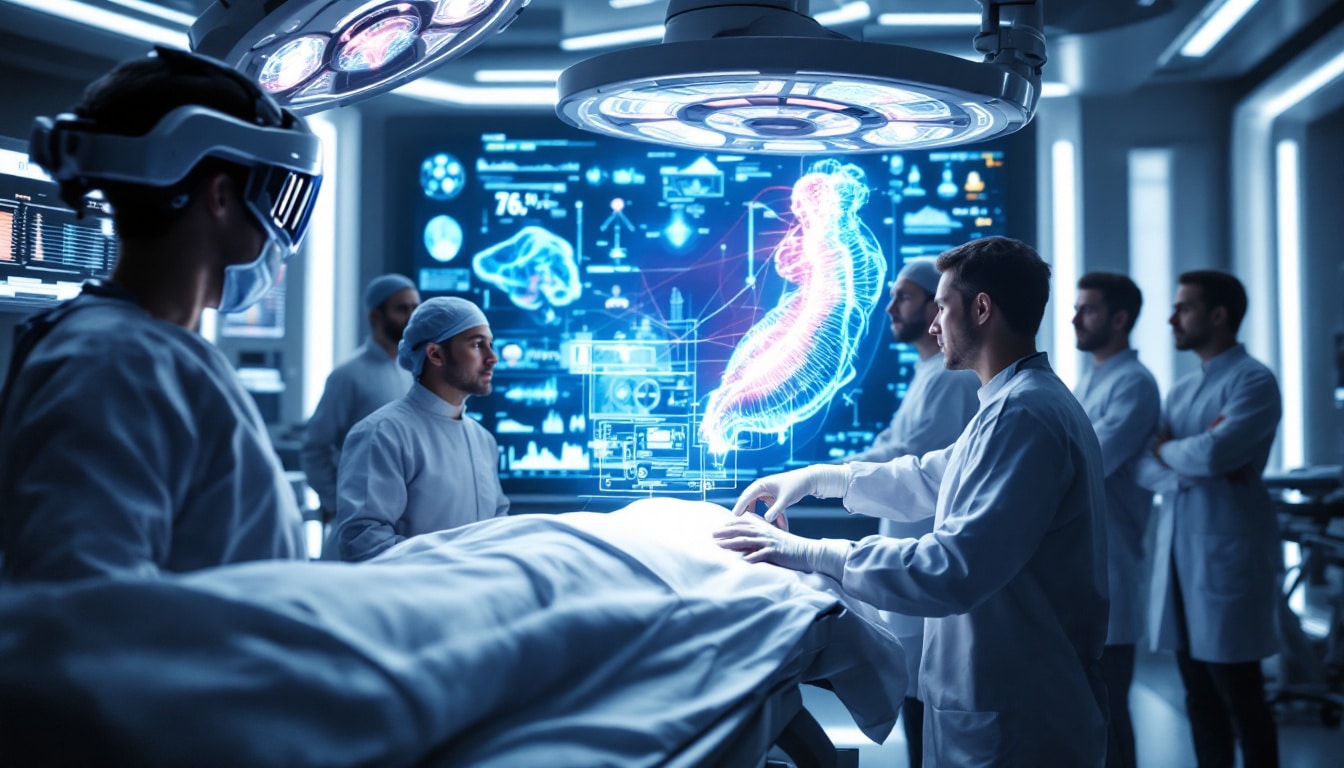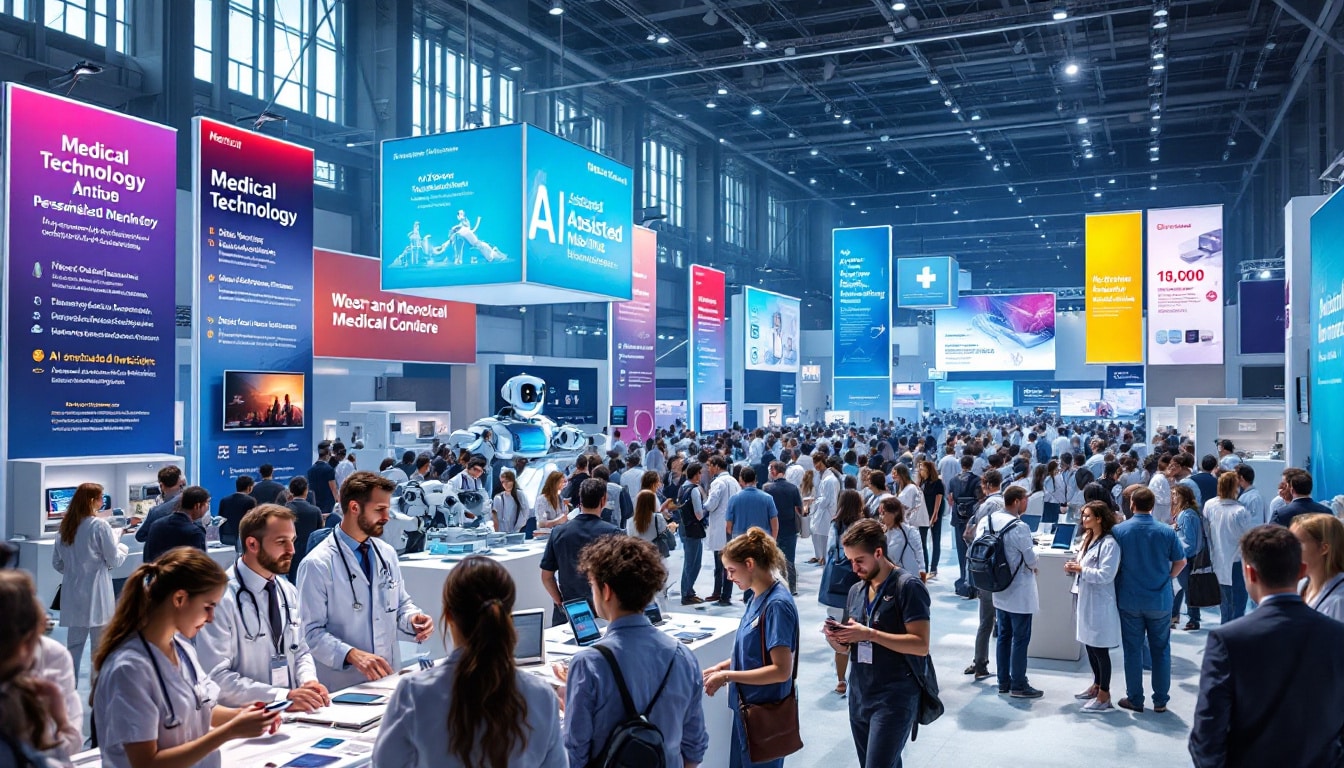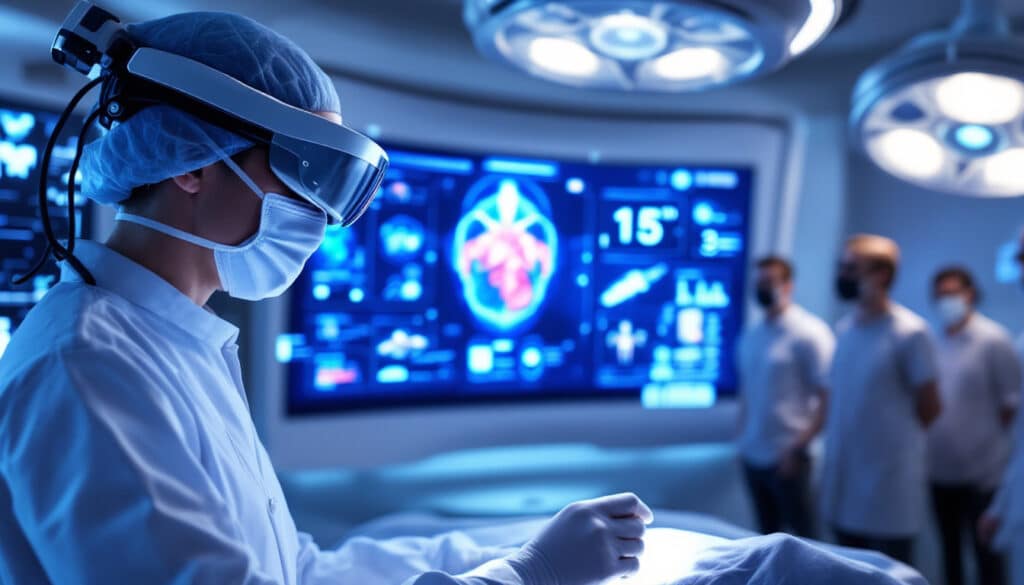Innovation in the field of robotic surgery is taking a new turn in the United States.
Two emerging companies, Vicarious and SS Innovations, are positioning themselves to challenge the current market leader.
Their advancement marks a crucial step in the evolution of medical technologies.
These companies are part of a new generation of robot developers aiming to optimize surgical procedures. Vicarious Surgical recently signed an agreement with the UMass Memorial Medical Center, facilitating the adoption of its robotic surgery system. Meanwhile, SS Innovations is nearing the submission of its SSi Mantra 3 system to the FDA, thereby expanding its potential applications in urology, gynecology, and general surgery. These collaborations promise to improve patient outcomes while providing advanced training for surgeons. At the same time, Vicarious’s financial results show a reduction in net loss, indicating increased stability. All these developments highlight a major turning point towards more precise and effective surgery through robotics.

vicarious surgical partners with umass to revolutionize robotic surgery
Vicarious Surgical takes a significant step by signing a strategic agreement with the UMass Memorial Medical Center, the flagship hospital of the UMass Memorial health system. This collaboration aims to promote the adoption of its innovative robotic surgery system in the United States. By partnering with a renowned medical institution, Vicarious Surgical strengthens its position in the market and accelerates the implementation of its advanced technologies in operating rooms.
The partnership with the UMass Memorial Medical Center will enable Vicarious Surgical to treat its first clinical patients as early as this year. Additionally, the company plans to submit a request for novelty classification to the Food and Drug Administration (FDA) by the end of 2026. This step is crucial for obtaining the regulatory approval necessary to market its robotic surgical system in the United States.
the goals of the collaboration with umass to improve surgical outcomes
The primary goal of this collaboration is to optimize the postoperative outcomes for patients. Surgeons and staff at UMass will work closely with Vicarious Surgical to develop practices that enhance postoperative care. This includes educating surgeons, effectively managing inventory, and establishing stringent sterilization protocols.
Standardizing processes before and after surgical procedures will ensure a consistent quality of care. Furthermore, observing procedures by surgeons will allow for continuous training and refinement of medical techniques. Regular testing of the Vicarious robot system will also ensure the reliability and effectiveness of the technology used.
As part of this collaboration, knowledge sharing and peer education will be encouraged. This will promote an exchange of ideas and experiences, thereby stimulating innovation and continuous improvement of surgical practices. John Kelly, head of general and minimally invasive surgery at UMass Memorial, emphasized that this program supports the organization’s efforts to improve surgical outcomes and the quality of care provided.
ss innovations is preparing to submit a novelty request to the fda
Alongside Vicarious Surgical, SS Innovations is also positioning itself in the market for surgical robots as it prepares its novelty classification request to the FDA. The company plans to submit a request for its robotic surgical system SSi Mantra 3 next July. This submission targets several medical fields, including urology, gynecology, general surgery, as well as thoracic and cardiac surgery.
The SSi Mantra 3, launched in June 2024, represents a technological advancement for SS Innovations. Already present in six countries, the system has obtained CE approval for Europe and is installed in 75 hospitals, where more than 3,800 successful procedures have been performed. This international expansion demonstrates the reliability and effectiveness of the system, further reinforcing the confidence of healthcare professionals in this technology.
SS Innovations recently began its listing on the Nasdaq in April, marking a new phase of growth and expansion. The company expects to report first-quarter revenue of approximately $6.4 million, with a gross margin of about 45%. These solid financial results reflect the growing demand for robotic surgery solutions and SS Innovations’ ability to meet market needs.
the impacts of robotic innovation on the medical sector
The introduction of robotic surgery systems such as those from Vicarious Surgical and SS Innovations has a considerable impact on the medical sector. These technologies provide increased precision during interventions, reduce the risks of complications, and improve patient recovery times. Robots also allow for better visualization of surgical areas, facilitating the surgeons’ work.
Moreover, automating surgical processes contributes to a more efficient management of hospital resources. Standardizing procedures and reducing human errors are major advantages for healthcare institutions. By integrating these robotic systems, hospitals can also enhance their reputation as leading medical institutions, thereby attracting more patients and professional talent.
Collaborations with academic institutions like UMass Memorial also allow for in-depth research on the effectiveness and improvement of robotic technologies. These partnerships foster continuous innovation and adaptation of systems to the specific needs of various medical fields. By relying on solid clinical data, developers can refine their products to offer even more effective solutions tailored to field requirements.
the financial outlook for vicarious surgical and ss innovations
The financial evolution of Vicarious Surgical and SS Innovations illustrates the dynamics of the robotic surgery market. Vicarious recently released its first-quarter financial results, showing a net loss of $15.4 million, an improvement compared to last year’s loss of $17 million. The company has $37.4 million in cash and investments as of March 31, with a projected annual cash burn of nearly $50 million.
These figures demonstrate Vicarious Surgical’s ability to support its operations while continuing development and expansion projects in the American market. Ongoing investment in research and development is essential to maintaining an edge over competitors and meeting increasing regulatory requirements.
On its part, SS Innovations shows promising financial performance with a first-quarter revenue forecast of $6.4 million and a gross margin estimated at 45%. This performance is supported by the acceptance of their products in various international markets and by the growing interest from medical institutions in robotic surgery technologies. The confidence of investors, strengthened by the Nasdaq listing, opens up new funding and growth opportunities for the company.
the challenge of competing with intuitive surgical in the american market
Intuitive Surgical, the undisputed market leader in robotic surgery systems, faces increased competition with the arrival of new players like Vicarious Surgical and SS Innovations. These innovative companies are seeking to differentiate themselves by offering advanced features and solutions tailored to the specific needs of hospitals and surgeons.
Vicarious Surgical is betting on its collaboration with prestigious medical institutions and its research capabilities to establish its presence in the American market. By developing strong partnerships and investing in healthcare professional training, the company aims to demonstrate the added value of its robotic systems in terms of precision, reliability, and efficiency.
SS Innovations, on the other hand, capitalizes on its international success and the rapid adoption of its SSi Mantra 3 in several countries. By targeting a wide range of surgical specialties, SS Innovations seeks to broaden its scope of application and establish itself as a viable and competitive alternative to Intuitive Surgical. Diversifying therapeutic indications and continuously improving robotic technologies are key strategies for capturing significant market shares.
the benefits for patients and surgeons with new robotic technologies
The adoption of robotic surgery systems offers numerous benefits for both patients and surgeons. For patients, these technologies enable more precise interventions, thereby reducing the risks of complications and speeding up recovery times. Smaller incisions, made possible by robots, minimize physical trauma and result in less postoperative pain.
For surgeons, robotics offers better ergonomics and enhanced vision through integrated high-definition cameras. This allows for smoother and more controlled movements, improving the precision of surgical actions. Furthermore, the standardization of procedures through robots reduces variability in performance and ensures consistent quality of care.
The integration of artificial intelligence and machine learning capabilities into these systems also paves the way for greater personalization of interventions. Robots can analyze data in real-time and adjust surgical techniques according to each patient’s specific needs, thereby optimizing clinical outcomes.
the regulatory challenges and steps for fda approval
One of the main challenges for robotic surgery companies is obtaining the necessary regulatory approvals to market their products. The FDA imposes strict standards for safety and efficacy, requiring solid clinical evidence before granting market authorization.
Vicarious Surgical plans to submit a request for novelty classification by the end of 2026, after commencing clinical treatments this year. This process involves rigorous clinical trials and thorough evaluation of the robotic system’s performance in real-world conditions. Collaboration with institutions like UMass Memorial facilitates this process by providing an environment conducive to research and development.
SS Innovations, for its part, is preparing to submit its request for the SSi Mantra 3 in July. By targeting multiple surgical specialties, the company must demonstrate the versatility and reliability of its system in varied contexts. Obtaining FDA approval is essential for accessing the American market, one of the largest and most competitive in the world.
the impact of technological innovation on surgeon training
The integration of robotic surgery technologies in hospitals also significantly impacts surgeon training. New technologies require adapting training programs to include specific skills related to the use of surgical robots. Surgeons must acquire deep technical mastery and familiarize themselves with new interfaces and operational protocols.
Partnerships with academic institutions like UMass Memorial allow for the development of advanced training programs, including simulations and hands-on sessions with robotic systems. This approach ensures that surgeons are well-prepared to integrate these technologies into their daily practice, thereby improving the quality of care provided.
Moreover, ongoing education and training in the hospital setting are essential for keeping healthcare professionals’ skills up-to-date. With robotic systems evolving constantly, surgeons must regularly participate in updates and training to fully leverage technological innovations.
the future outlook for robotic surgery in the united states
The future of robotic surgery in the United States looks promising due to the joint efforts of innovative companies like Vicarious Surgical and SS Innovations. The increase in investments in research and development, as well as collaboration with leading medical institutions, are key factors that will drive growth and adoption of these technologies.
Continuous advancements in artificial intelligence and machine learning will enable robotic systems to become even smarter and more autonomous, offering unprecedented surgical assistance capabilities. These developments will pave the way for more complex and personalized interventions, addressing the diverse needs of patients.
Furthermore, the expansion of therapeutic indications and improvement of robot functionalities will contribute to broader adoption across different medical fields. The growing demand for effective, high-quality healthcare solutions will support the continued expansion of the robotic surgery market.
Finally, initiatives aimed at reducing costs and making these technologies more accessible will play a crucial role in their widespread adoption. By making robotic systems more affordable, a greater number of healthcare facilities will be able to benefit from the advantages offered by robotic surgery, thereby improving patient care across the country.













